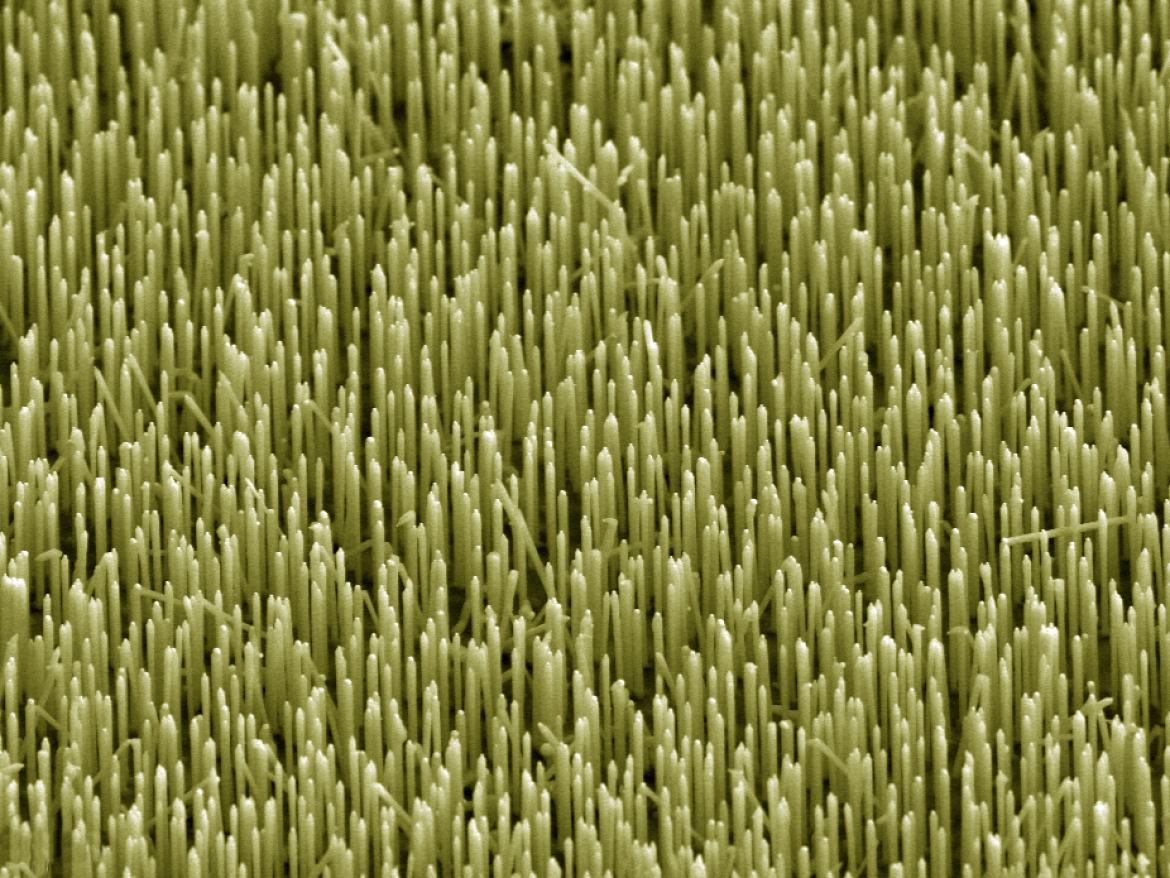
At Lecce Unit there is a long time experience in the Synthesis of Functional Nanomaterials.
Synthesis of Advanced Nanostructured Materials
With more than twenty five years of expertise at IMM Lecce functional materials are synthesized by Metalorganic Vapour Phase Epitaxy (MOVPE) growth technology. The Herero structures are mainly III-V compound semiconductor nanowires grown by self-assembly processes and selective area epitaxy for application in the fields of Energy conversion (high efficiency photovoltaic cells) and Photonics (nano-laser, photo-detectors): (i) core-shell and core-multishell nanowires with “quantum-well tube” structure based on III-V materials, and (ii) core-shell nanowires based on III-N-V intermediate band.

FE-SEM micrographs of three different NW structures, namely (a) GaAs, (b) GaAs/AlGaAs core-shell and AlGaAs NWs. Markers in (a) are for all images and represent 2 micron. The insets show the corresponding in-plane morphology (cross-sectional shape) of a single NW [MRS Symp. Procs., vol. 1350, Paper no.: 1350-EE06-01 (2011)]
As an example of the high quality of these nanostructures, the luminescence and inner structure of GaAs-AlGaAs quantum well tube (QWT) nanowires were studied using low-temperature cathodoluminescence (CL) spectroscopic imaging (University of Salento, Lecce, Italy), in combination with scanning transmission electron microscopy (STEM) tomography (Leibniz Institute for Solid State and Materials Research, Dresden, Germany), allowing for the first time a robust correlation between the luminescence properties of these nanowires and their size and inner 3D structure down to the nanoscale. The results contributed to a deeper understanding of the luminescence-structure relationship in QWT nanowires and foster their applications as efficient nanolaser sources for future monolithic integration onto silicon. Nanophotonics, 8(9), 1567–1577 (2019)
Further readings:
Nano Letters,18 (8), 4777-4784 (2018); Nano Letters,13 (9), 4152-4157 (2013); Physical Review B 90,125404 (2014)
Van der Waals epitaxy by means of Molecular Beam Epitaxy (MBE) of 2-dimensional (‘layered’) materials, such as graphene and graphene-like materials (Transition Metal Dichalcogenides, TMDC and hexagonal boron nitride, h-BN) for energy applications (high efficiency photovoltaic cells) and nano-electronics applications (transistors, tunnel diodes). The MBE technology for the growth of such materials – unique in Italy - has been chosen to get high structural quality and purity materials in order to increase their optical and electronic properties.
Contact person: Paola Prete
Sol-gel/solvothermal synthesis of colloidal oxide nanostructures in energy conversion/storage systems: copper oxide (CuO) nanocrystals as active components in nanofluids for enhancing the heat exchange in solar concentrator systems; supercapacitor application of colloidal TiO2-V2O5 nanocrystals; application of SnO2-V2O5 and TiO2-V2O5 nanocrystals as cathodes for lithium batteries and in artificial photosynthesis (CO2 reduction), photocatalysis.
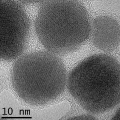
HRTEM image of copper sulphide nanocrystals prepared by solvothermal synthesis
Contact person: Mauro Epifani
Synthesis of magnetic nanoparticles Superparamagnetic nanocrystals are obtained by wet-chemical synthetic methods (co-precipitation, thermal decomposition); the surface of prepared nanoparticles is functionalized with biocompatible ligands or bio-inspired coatings; assembly of nanoparticles in super-ordered structures are obtained by controlled aggregation of single crystals. All the nanocomposites are tested for application in nanomedicine and in particular for the development of novel contrast agents.
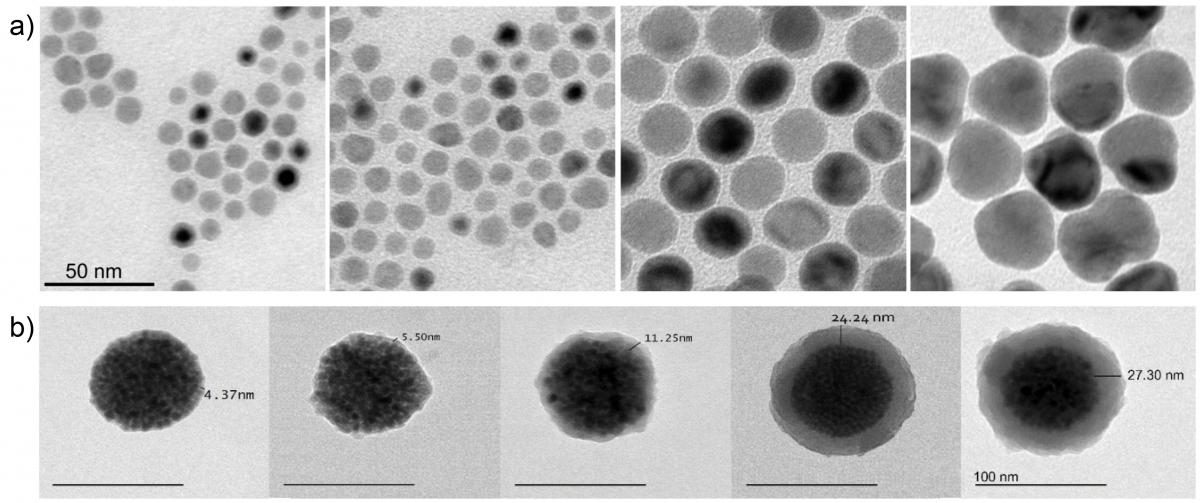
TEM analysis of (a) iron oxide nanoparticles by thermal decomposition, with different core sizes, and (b) magnetic nanoclusters coated with a biocompatible polydopamine shell, with an incremental thickness.
Further readings:
ACS Appl. Mater. Interfaces, 10, 20271-20280 (2018); ACS Appl. Mater. Interfaces, 11, 1864-1875 (2019);
Contact person: Riccardo di Corato
Synthesis and post-synthetic processes of metal and metal-oxide nanoparticles toward enhanced sensing applications. Functionalized gold nanorod are used for colorimetric sensing of heavy metals in water (i.e. Pb, Hg and Cd). Metal-oxide nanostructures are used for electrochemical sensing of volatile organic compound (VOC).
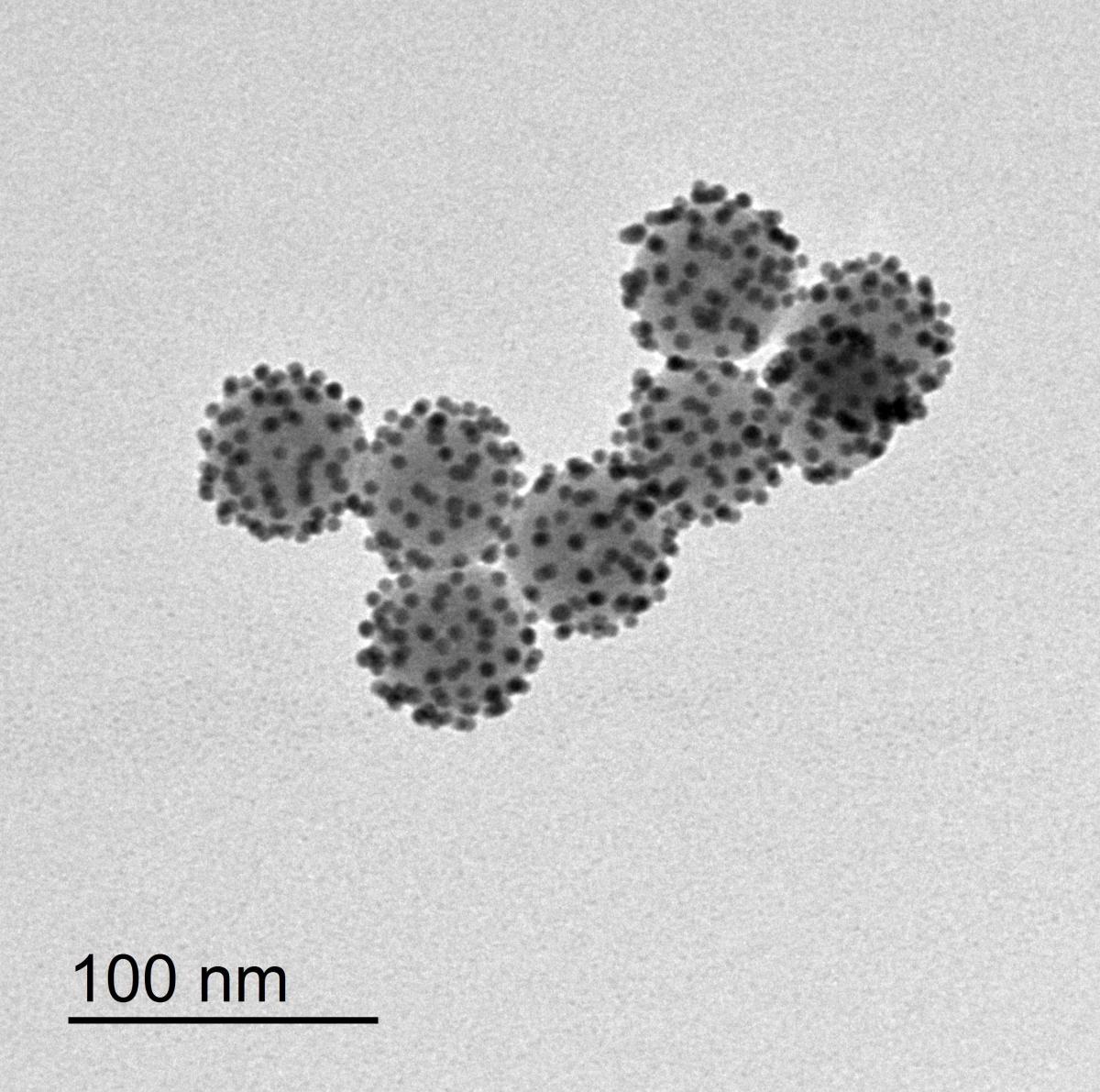
TEM Image of 50 nm SiO2 nanoparticles decorated with 5 nm Au
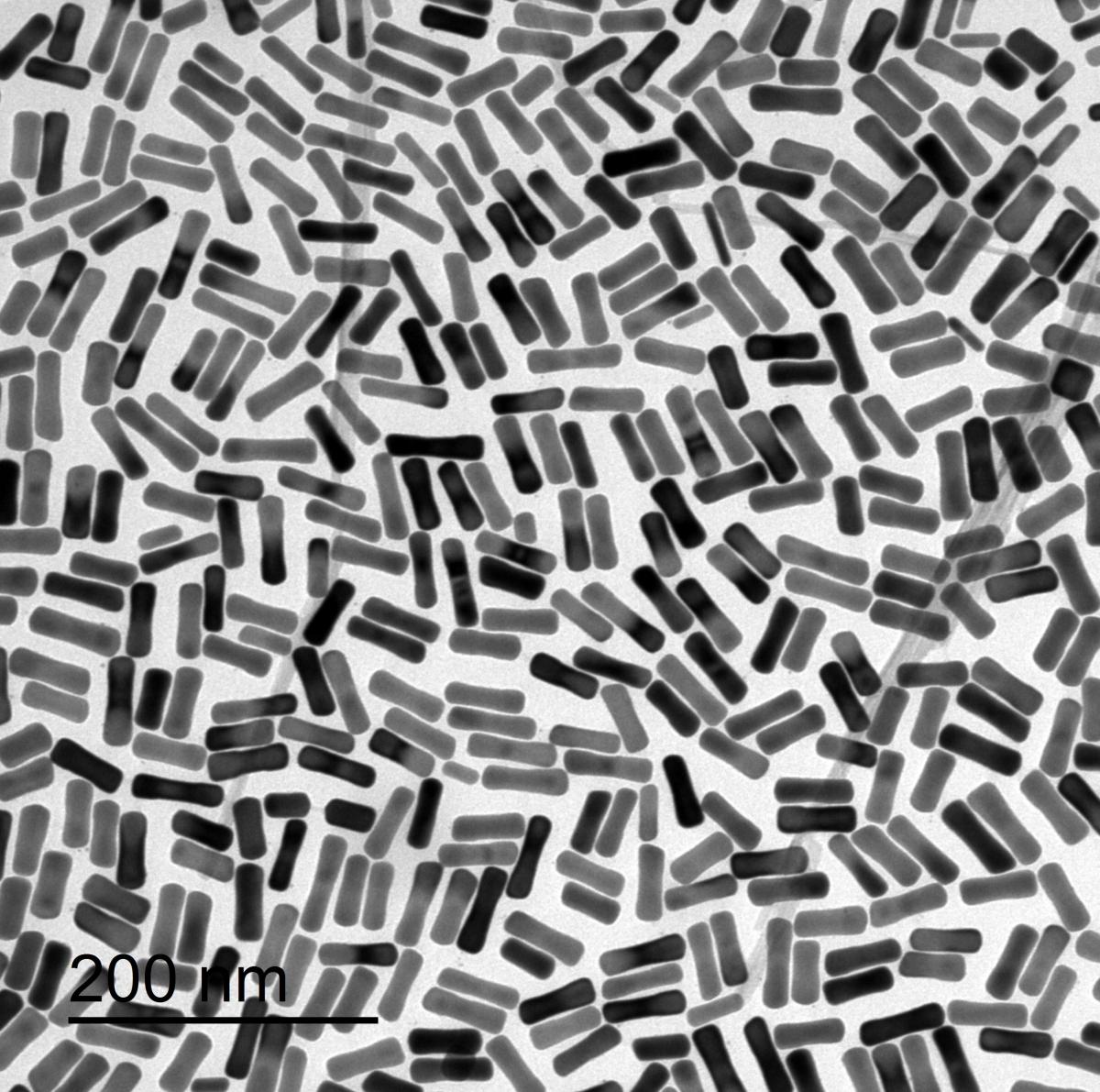
TEM Image of Au nanorod with aspect ratio 4
Contact person: Enrico Binetti
Functionalized magnetic nanoparticles for DNA capture Magnetic nanoparticles allow the easy recovery of bound DNA (no precipitation and washing steps that reduce the final amount DNA and limitcontaminations due to sample manipulation)
Exploitation of natural polymers (i.e. linear polysaccharides)
- Biocompatible
- Non-toxic
Electrostatic interaction between polymeric coating (CS) and DNA leads to the formation of CS-DNA polycomplexes
Contact person: Laura Blasi


